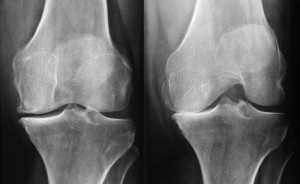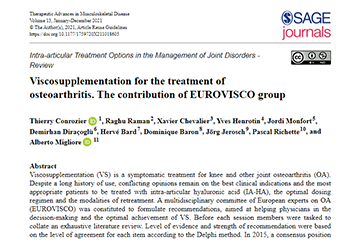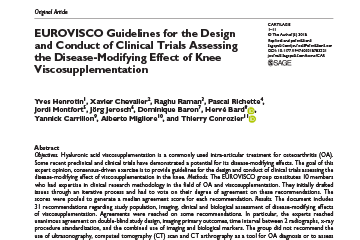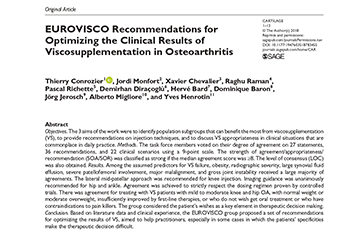
Viscosupplementation (VS) is still controversial. One of the key points is the lack of well-identified factors of response.
The study “Obesity and radiological severity are associated with viscosupplementation failure in patients with knee osteoarthritis”, published in Journal of Orthopaedic Research this month, has been designed to identify clinical and radiological factors associated with lack of relevant response after intra-articular (IA) hyaluronic acid (HA) injections in symptomatic knee OA patients.
This study is a post-hoc analysis of the HAV-2012 trial, a controlled, multicentre, double-blind, randomized, non-inferiority trial comparing 3 weekly IA injections of HA (HAppyVisc® or Euflexxa®) for symptomatic tibiofemoral OA .
At inclusion, the following date were recorded:
- Demographic data
- Anthropometric data
- Clinical data (WOMAC score, patient global assessment, presence of knee effusion)
- Radiological data (OARSI grade, patello-femoral involvement)

166 patients with full available data were included.
- Mean age was 65.2 years [63.7-66.8]
- 101 (60.8%) were women
- 73 (44.0%) had severe tibiofemoral space narrowing
- VS response was defined according to OMERACT-OARSI response criteria at month 6.
.
RESULTS:
- Obesity (BMI ≥ 30 kg/m2) and radiological severity (OARSI grade 3) were significantly associated with VS failure (p=0.001 and p=0.008, respectively).
- The association of obesity and severe tibiofemoral space narrowing significantly increased the risk of VS failure.
Consequently, IA injection of HA for knee OA should mainly be considered in subjects with low BMI and mild tibiofemoral space narrowing.
Ref: Obesity and radiological severity are associated with viscosupplementation failure in patients with knee osteoarthritis. F. Eymard; X. Chevalier; T. Conrozier. J Orthop Res. 2017 Jan 27. doi: 10.1002/jor.23529.
.
Full Text Links


